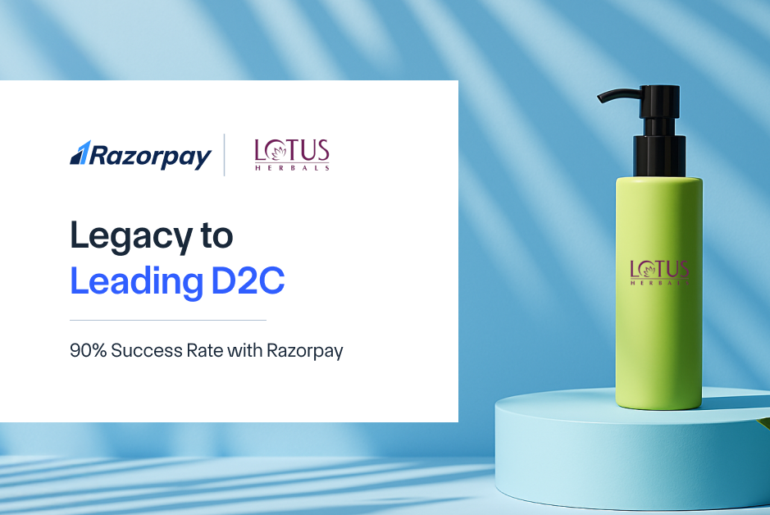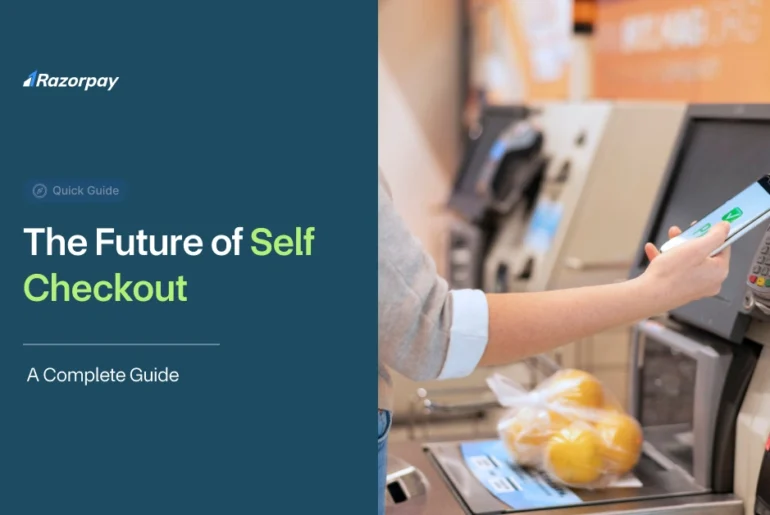Updated on 27th June, 2025
Return to Origin (RTO) is one of the most pressing challenges for Indian e-commerce businesses, with return to origin rates reaching as high as 20-25%, a significant threat to profitability and customer satisfaction. RTO refers to undelivered orders being returned to the seller, leading to lost sales, increased logistics costs, and operational inefficiencies. In this blog, we’ll explore practical strategies, cutting-edge solutions, and insights to help e-commerce businesses minimize return to origin rates and enhance both efficiency and profitability.
What is Return to Origin (RTO)?
Return to Origin refers to the process where undelivered orders are returned to the seller due to failed delivery attempts. Common reasons include the customer being unavailable, order refusal, or incorrect delivery details. Once returned, the product is sent back to the seller’s warehouse, incurring logistics costs and operational challenges. For e-commerce businesses, return to origin is not just a financial burden but also impacts inventory management and customer satisfaction, making it a critical issue to address.
How Does Return to Origin Impact Online Businesses?

Return to Origin significantly impacts e-commerce businesses by increasing operational and financial burdens, such as:
- Forward & Reverse Logistics Costs: Sellers bear the expenses of shipping products to customers and returning undelivered items back to the warehouse, which can increase logistics costs by 15-20% per order.
- Blocked Inventory: Products returned remain unavailable for sale, tying up valuable inventory space and resources, leading to potential losses of up to 10% of monthly revenue.
- Operational Costs: Businesses incur costs for repackaging, quality checks, and reprocessing returned items, which can add Rs. 50-100 per product to expenses.
- Repackaging & Quality Checks: When a product is returned due to return to origin, the online store must repeat the entire order processing cycle, including repacking, quality checks, and coordinating with logistics partners
- Increased Damage Risk: Extended storage periods for returned products raise the likelihood of damage or reduced product lifespan.
Related Read: What Is the Difference Between Inbound and Outbound Logistics?
Top 5 Reasons why Return to Origin Happens
Identifying the root cause of return to origin is critical for any E-commerce business. There will be returns, but finding the reasons for return to origin can save online businesses from losing revenue and profits.
Invalid User
When customers place an order, they add an address and contact details to receive their order. However, in some cases, some customers may add invalid or incorrect contact details, such as email ID and phone number. When the delivery person tries to reach the customer, they are not reachable. In such a case, the product is returned back to the seller, and the customer is marked as an invalid user.
Incorrect/Invalid Delivery Address
A customer needs to fill in address details and other information. This information goes to the logistics company to locate the customer’s address. However, some customers may enter incorrect information in the address field. And wrong addresses are one of the main reasons for return to origin, leading to business loss.
Now, an address can be considered faulty/incorrect for a multitude of reasons:
-
Unnecessary Information
A customer provides unnecessary information. For example, 26 Mahatma Gandhi Road (on weekdays), Raheja Towers (on weekends), Dhule, Maharashtra, India. Here, the customer has added two components to one address. One is 26 Mahatma Gandhi Road, and the second is Raheja Towers. Instead, the customer can have two different addresses and select one according to their availability & convenience.
-
Ambiguous Information
The address contains ambiguous information, meaning the address has doubtful information and is difficult to understand. For example, Sarjapur road, Bangalore, ask the tea shop for XYZ, and they will tell you the direction.
-
Spelling Errors
Spelling errors are pretty common. If the delivery address has spelling errors, it can confuse the delivery partner while attempting a delivery, leading to a return to origin case. For example, Mr. Rajesh Kumar, House no. 22, Mauue Biar 1(should have been Mayur Vihar 1), Delhi.
-
Missing Information
A customer provides a delivery address but forgets to provide essential details. The address lacks crucial details, such as street name, house or flat number, missing or incorrect pin code, etc. In this case, locating the customer’s address becomes challenging for the delivery partner.
-
Incomplete Address
An address needs to have complete information. If it misses crucial details, it’s considered to be incomplete. For example, Mr. Rahul Sharma, Lodhi Road, Delhi. This is an insufficient address because it lacks a street name, contact details, pin code, etc.
Customer Not Available at the Doorstep
On the day of the delivery of an order, the customer is supposed to be available to receive the product. If not, someone else needs to be there at the provided address. But in case of non-availability both physically and via phone, the delivery person returns the product and marks it “customer not available,” resulting in a return to origin.
Customer Intent
It is always important to know why customers decline or reject orders. An E-commerce store’s success or failure largely depends on how customers react to their products. And customers may reject/return orders at the doorstep for the following reasons:
- Customers change their minds at the last minute.
- Customers have ordered the identical product from another brand that delivered it sooner and at a lower price. They accept the older product delivered by another company and reject the new one at the doorstep.
- Customers don’t require the product anymore after ordering and don’t cancel the order because they find it tedious or are unaware of the cancellation process.
- Customers reject orders when they see shabby or scruffy packaging and feel the product inside could be damaged or of low quality, leading to return to origin.
Fraudulent Order
E-commerce fraud can take many forms. However, not every fraudulent order will lead to return to origin but will definitely cause business loss. Some of the instances of fraudulent orders that can lead to return to origin are:
- A fraud person uses another person’s debit/credit card to order an item, and the actual cardholder requests a Reduce RTO Today by contacting their bank. In this case, if the product is shipped, it returns back to the seller, and the refund is processed. Another scenario can be when a customer is unhappy with the product received or the delivery is late and asks for a chargeback. Yet again, the product is rejected or declined, leading to return to origin.
- When competitors or bad actors place dummy orders to block the inventory of an online store, the order gets placed and shipped, and since it is a dummy order, the fraud person rejects/declines it. This leads to return to origin and a loss of monetary cost since the online sellers pay extra for reverse logistics.
Reduce Return to Origin Rates with Magic Checkout

Return to origin is a crucial challenge for E-commerce businesses, and unless they find an optimum solution to deal with it, they will continue to incur a loss because of RTO. Knowing how important it is for every E-commerce business to have a lower return to origin rate, Razorpay is here with Magic Checkout. Magic Checkout enables online sellers to detect orders with a higher RTO probability.
Smart COD
A study stated that COD is the chosen payment method for a whopping 66% of orders placed on all leading e-retail platforms in India. Out of which, 33% of them are not delivered.
In the case of COD, customers have nothing to lose. There is no obligation to accept an order and no fear of prepayment. Since the customer has not invested themselves in the transaction, it’s the online business that has to incur the loss in the event the customer declines the order.
Magic Checkout has the provision to disable the COD payment option in real-time for high-risk orders and encourages customers to prepay. It analyzes each order and red flags high-risk orders where the propensity to RTO is high based on customers’ historic RTO patterns across hundreds of brands in the Magic Checkout network.
Related Read: Cash on Delivery Meaning: Understanding COD in E-commerce
Address Validation
Entering the correct address details is vital for the delivery of a product. And it is a known fact that the majority of return to origin happens because of incorrect, incomplete, and invalid addresses. To mitigate this challenge, Magic Checkout identifies invalid/incomplete/non-deliverable addresses in real-time. Here’s how:
- Magic Checkout checks if an address has been entered correctly and in a structured manner to make it easier for online sellers and logistics partners to deliver the products.
- Magic Checkout detects monkey typing, otherwise known as gibberish detection. This helps Magic Checkout in highlighting risky orders.
- Finally, Magic Checkout does address completeness checks. It assesses the completeness of addresses based on a machine learning model.
Apt Error Message
Whenever a pin code or similar details are entered incorrectly, Magic Checkout shares an apt error message that helps the customer understand where they are going wrong. This happens in real-time and allows customers to know about the error then and there.
For example, if a customer enters a five-digit pin code instead of six, the system alerts the customer immediately. An apt error message prompts customers to enter the correct information.
Easy Address Addition
Another feature that Magic Checkout provides is easy address addition. The system offers autosuggest and autofill addresses to ensure that the addresses provided are correct and entered in a structured manner.
Magic Checkout shows only valid addresses as suggestions reducing the chances of invalid addresses. Moreover, the suggested addresses are automatically broken down into structured components, saving customers’ time. Also, this ensures that an address is complete and detailed.
RTO Protection by Magic Checkout
Magic Checkout understands the ordeal an online business has to go through when a product is returned. And this is the reason why Magic Checkout provides RTO Protection on all Magic Checkout orders. We want you to incur less loss, and that’s why we are here to absorb your RTO costs.
Razorpay Magic Checkout offers advanced solutions to help e-commerce businesses overcome Return to Origin losses and accelerate growth. With features like fraud detection algorithms, address validation tools, and smart COD management, Magic Checkout ensures a seamless checkout experience while reducing the risk of RTO. Protect your business from unnecessary losses and focus on scaling your operations with Razorpay Magic Checkout.
Related Read- Discover more insights on optimizing your checkout ecosystem and drive seamless e-commerce experiences with Razorpay’s expert blogs.



